Major 6th Interval Songs
‘My Way’ – Frank Sinatra

‘Man in The Mirror’ – Michael Jackson
As you can see from the image below, the B to D gives us a descending major 6th. This interval forms the first two notes of the chorus of the song.

The Holly and the Ivy
The opening line ‘The Holly and the Ivy’ contains two major 6ths. These really lift the melody right at the start of the song.

Jingle Bells
‘Jingle Bells’ has an ascending Major 6th from D natural to B natural right at the start of the song. This is a major 6th as B natural is the 6th note of the D major scale.

What is a Major 6th Interval?
Firstly, the definition of an interval is the distance between two notes. We could play the notes at the same time, a harmonic interval, or one of the other, a melodic interval. So how can we describe the distance between two notes.

Using whole steps and half-steps (tones and semitones)
We could describe an interval in terms of the number of half-steps for the lower note to the upper note. For a major 6th we have to go up nine half-steps or four and a half whole-steps to create the interval.

Using scales to name intervals
Simply put, scales are patterns of half-steps and whole-steps. In the major scale, the 6th degree will be nine half-steps above the root note. This interval is therefore call a Major 6th.
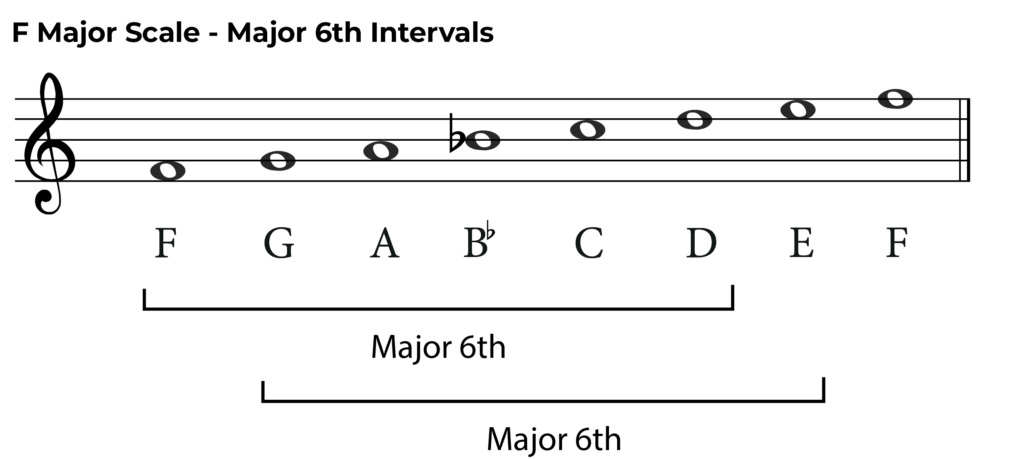
Ear Training and Intervals
To develop as a musician you’ll want to be able to recognise intervals by ear. This is where ear training comes in, as the more you practice, the better your’ll get.
My recommendation for this is Tonegym as they have a comprehensive and fun program for training your ears. It’s what has gotten the best results with for my own students.
In the ‘tools’ section of their site, Tonegym even have an interval memorizer that allows you to learn every type of interval.
For an in-depth look at ear training, here’s my full review of Tonegym.
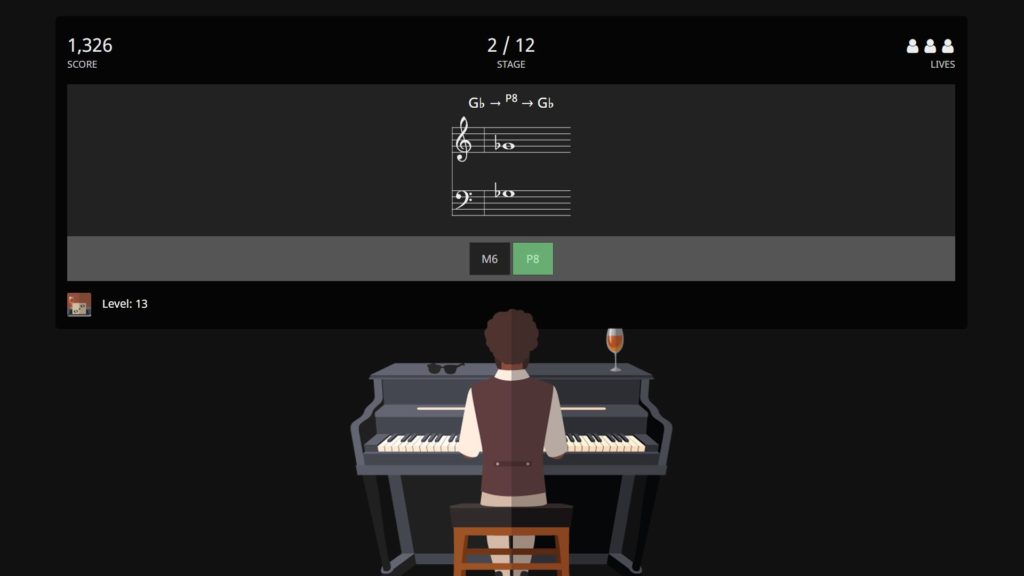
Examples of Major 6th Intervals
Here is a table which shows Major 6ths across a whole octave. Remember that to name an interval ask yourself, ‘Which degree of the lower note’s scale is the higher note?’
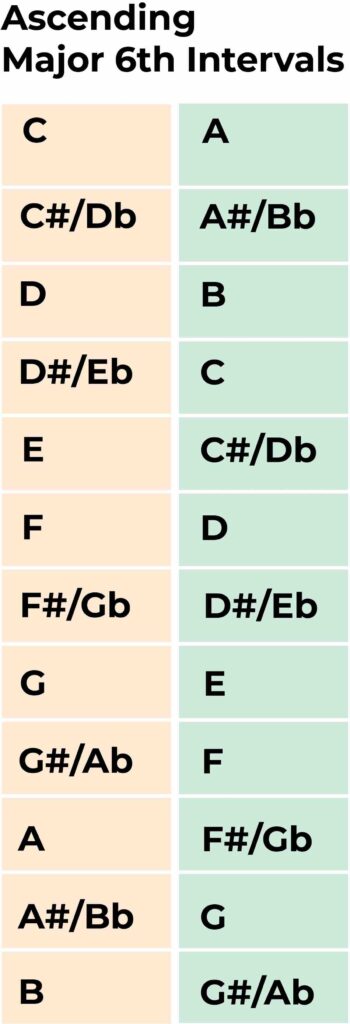
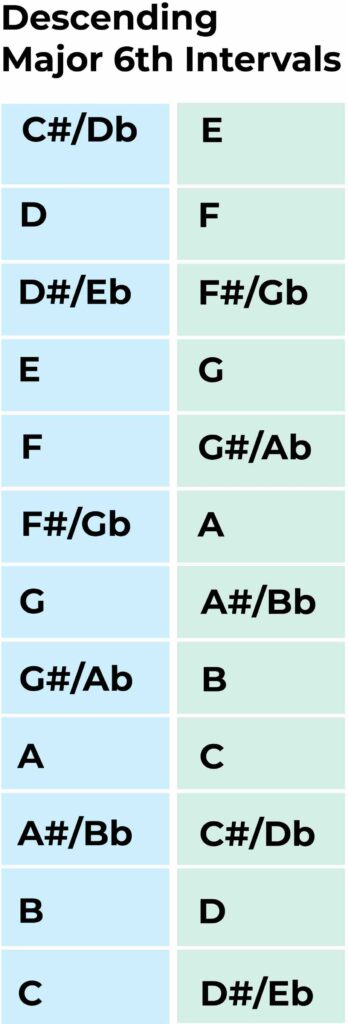
Major 6th Interval Qualities
We can describe the sound of intervals using a numbers of adjectives. An interval can sound ‘stable’ or ‘grounded’ like a perfect 5th, or it could sound ‘dissident’, ‘neutral’ or even ‘sinister’.
The interval of a major 6th evokes a sense of stability and openness. It can be described as a harmonically rich interval, as it encompasses a considerable distance on the musical staff.
In terms of emotions, the major 6th interval tends to create a feeling of tranquility and contentment. The interval’s stability is often associated with a certain level of resolution and completeness, offering a strong foundation within a melodic context.
When used in melodies, the major 6th interval can lend a sense of elegance and sophistication. It often exhibits a soaring quality, that captures attention and creates a memorable musical line. This interval is frequently used in various musical genres, including classical, jazz, and pop.
How to Identify Major 6th Intervals by Ear
The best way to start identifying Major 6th intervals is by listening to reference songs like the ones above. This will give you a reference point to look back at when listening to new pieces.
The solfege system can also help as ‘do-la’ is a major 6th interval (C to A).

ToneGym- The Ultimate Ear Training App
ToneGym allows you to improve your ear with a range of games, interactive and competitions.
Or check out our complete review of ToneGym.

How to Play Major 6th Intervals on Your Instrument
If you are a pianist then playing a Major 6th couldn’t be easier. Moving up nine keys (or nine half-steps) will give you a Major 6th. Check out the examples below.
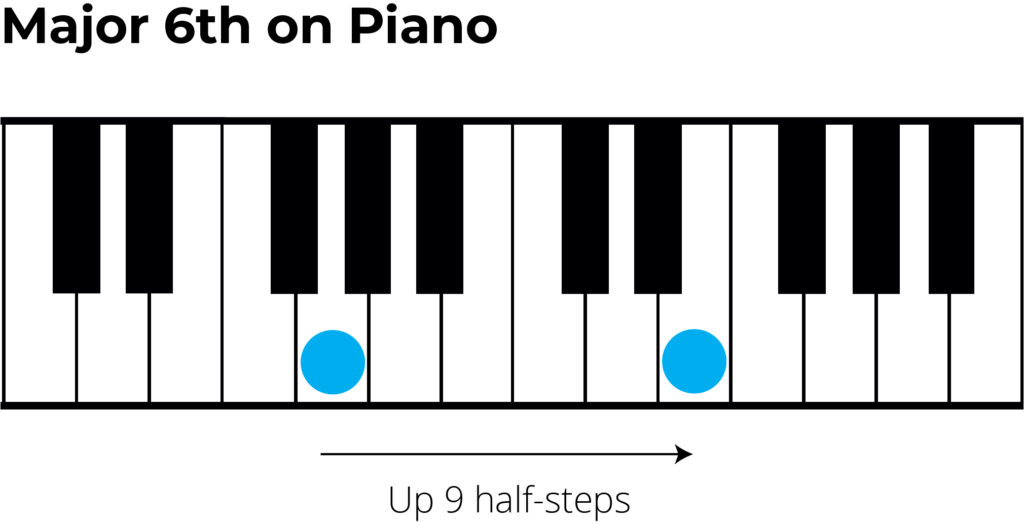
Major 6th intervals on guitar are also simply to play. The shape below can be slide up a down the neck to play major 6th intervals starting and ending in any note.
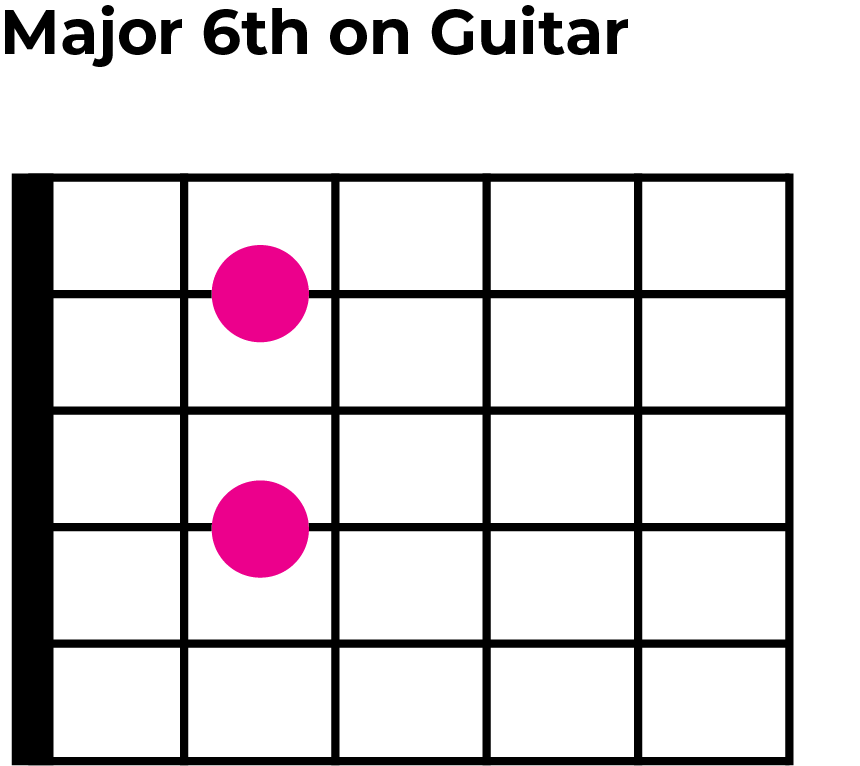
What’s next….?
- Learn about the Minor 6th intervals.
- Expand your interval knowledge with out complete guide to intervals.
